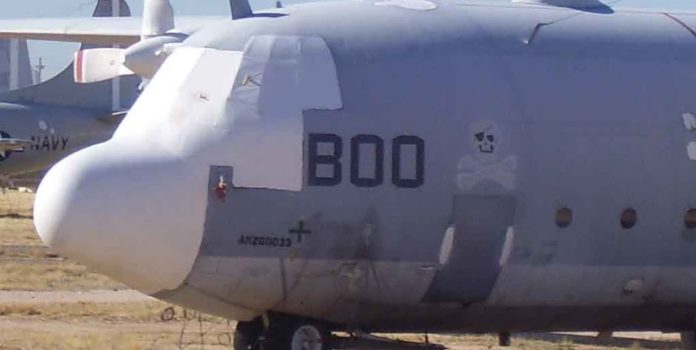WASHINGTON — A pair of Marine Corps aerial refueling aircraft are said to be haunted by Marines who worked and flew on them.
The KC-130F, introduced in 1962, was designed to do air-to-air refueling of fixed-wing aircraft and helicopters.
This versatile aircraft has also been used to transport troops and cargo. During the Vietnam War, two of them, tail numbers 149800 and 149808, were used to transport many thousands of killed and wounded soldiers, sailors, airmen and Marines stateside.
The nose number of the 149800 was 800 and the nose number of the 149808 was 808. Because the number 8 looks similar to the letter B, the aircraft were nicknamed BOO and BOB, respectively.
Delbert H. Cogswell Jr. worked in Marine Aerial Refueler Transport Squadron-152, better known as VMGR-152, at Marine Corps Air Station Futenma, Okinawa, Japan, in the 1980s and 1990s, where BOB and BOO resided.
“There are many stories of feeling uneasy or feeling watched while working on those two aircraft during the night shift, which for us was all night long on most nights,” said Cogswell, a mechanic and flight crew member. “Most Marines in the maintenance department would not work on these planes by themselves.
“I always felt as if I was being watched just while walking by them at night, even with all the lighting that we had in the flight line. A few claimed to even see a figure that shouldn’t have been there. Shapes and shadows that come and go. Just an uneasy feeling. Not sure how many bodies were transported but there were a lot.”
Hank Gerace, a member of the VMGR-152 flight crew and mechanic, said of BOO: “I’ve seen the profile of someone in the pilot’s seat while securing the aircraft for the night. Another time I was working on that bird when I heard someone come on the plane and start walking around through the cargo compartment and on to the top of the bird.
“Only thing was that at the time I was sitting under the only accessible hatch.”
A lot of those old F models had patches repairing small arms damage from enemy fire in Vietnam on their bellies and tail ramps, Gerace said.
“I heard a story about a person who was walking toward the back of the aircraft making sure all the doors were secured as he was leaving,” Jason J. Casanova, maintenance controller, said of BOO. “As he was walking, he saw someone dressed in old fatigues sitting in the parachute seat looking out the window.
“When he looked again, the figure was gone.”
Christopher M. Hanson, flight mechanic, spoke to a squadron member who told him he saw a person sitting next to him inside BOO. When he looked away and back again, the person had vanished.
Others in the avionics community have seen glowing red lights inside the two aircraft at night, when power was not on.
BOO is the fuselage trainer at Marine Corps Air Station Cherry Point, N.C.
BOB is at the 309th Aerospace Maintenance and Regeneration Group, often called “The Boneyard,” at Davis–Monthan Air Force Base, near Tucson, Ariz., where many other retired aircraft are parked.
By 2006, all of the KC-130Fs were retired. The KC-130J, introduced in 2004, is still in use by the Marine Corps, taking on the same missions as its predecessors.
Don’t miss out! Subscribe to our email newsletter to have all our smart stories delivered to your inbox.



